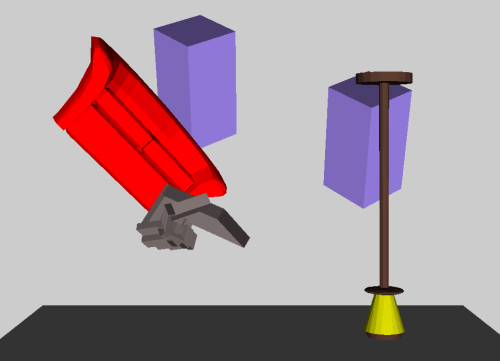
|
The next technique is ray-casting technique [2,3]. With object we manipulate by ray. If we want to translate object we can do it easily with hand motion. But object rotation is difficult with this technique. To rotate object is easy only around ray axis. If we want to rotate around more axes we must employ some signal again (i.e. two buttons, giving the choice to rotate around an additional axis).
The next technique is WIM (World In Miniature) [5]. User sees the miniature copy of original scene and manipulation is realized in this synoptic world. The technique is appropriate particularly when we work with large objects that block out its surroundings.
For precise manipulation it is necessary to have the possibility to set a constraint that narrows the degree (range) of freedom. For example we want to restrict a motion only to XY plane or along Z axis and to set the possible range of movement limits. Good aids are co-located widgets and sliders, that allow to set the constraints easily.